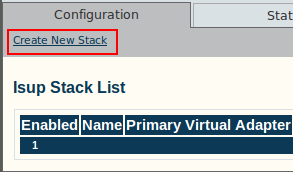Toolpack:Creating an ISUP Stack A
From TBwiki
(Difference between revisions)
m (moved Toolpack v2.5:Creating an ISUP Stack to Toolpack:Creating an ISUP Stack A: New naming convention) |
|||
| Line 1: | Line 1: | ||
=== '''''Applies to version(s): v2.5, v2.6.''''' === | === '''''Applies to version(s): v2.5, v2.6.''''' === | ||
| − | {{DISPLAYTITLE: | + | {{DISPLAYTITLE:Creating an ISUP Stack}} |
Now that you have configured the MTP3 layer of your SS7 system, you must create an ISDN user part stack. The ISDN user part (ISUP) is the highest layer in the SS7 signaling stack and is responsible for the handling of calls. | Now that you have configured the MTP3 layer of your SS7 system, you must create an ISDN user part stack. The ISDN user part (ISUP) is the highest layer in the SS7 signaling stack and is responsible for the handling of calls. | ||
Latest revision as of 13:35, 9 July 2012
Applies to version(s): v2.5, v2.6.
Now that you have configured the MTP3 layer of your SS7 system, you must create an ISDN user part stack. The ISDN user part (ISUP) is the highest layer in the SS7 signaling stack and is responsible for the handling of calls.
To create an ISUP stack:
1- Click ISUP in the navigation panel
2- Click Create New Stack
3- Configure the new ISUP stack:
- Make sure the box labeled Enabled is checked
- Enter a name for the stack
- Select a primary hardware adapter
- Select a secondary hardware adapter
- Click Create
4- Verify that the "IsupStack was successfully created" message appears


